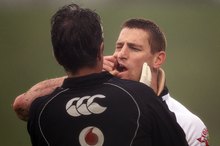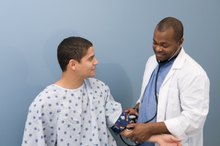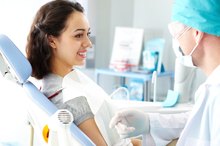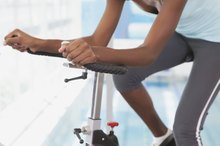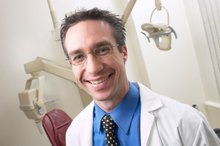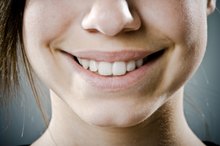Running After Having Your Wisdom Teeth Pulled
Wisdom teeth appear between the ages of 16 to 20 and are extracted if they come in crooked or don't fully emerge. Often, wisdom teeth will come in straight and your dentist will recommend they come out anyway to leave room for the rest of the teeth as you age. Exercise and running after wisdom tooth extraction should be taken in the context of how difficult the procedure is; some patients can resume exercise very quickly.
Non-Impacted
Non-impacted wisdom teeth are easier to extract; often the patient is under local anesthesia only. You may experience considerable bleeding or have stitches or packing where the tooth or teeth were removed. Since between one and four wisdom teeth may be extracted, follow the instructions of your dentist on the time to return to exercise, generally when bleeding has stopped after one or two days.
Impacted
Can I Play Sports After a Tooth Extraction?
Learn More
Impacted, or partially erupted, wisdom teeth may require oral surgery under general or twilight anesthesia. Because the anesthesia can linger in your body for more than 48 hours post-surgery, you may have even worse swelling a day or two after the extractions. If you take pain medication and anti-inflammatory drugs, you need to rest at home until your pain and inflammation subside. Do not exercise until your oral surgeon clears you.
- Impacted, or partially erupted, wisdom teeth may require oral surgery under general or twilight anesthesia.
- If you take pain medication and anti-inflammatory drugs, you need to rest at home until your pain and inflammation subside.
Gradual Return to Exercise
The most important factor in running after wisdom tooth extraction is a gradual return to exercise. Since the procedure is scheduled well in advance, you will have time to plan an easy running week after having your teeth pulled. Start your workout with a warmup phase -- for example, jogging 1/4 mile around the track. Make sure your running posture is upright, and do not clench your jaw. Then pick up your pace and run a mile or two, depending on your condition. Cool down by jogging slowly or walking.
- The most important factor in running after wisdom tooth extraction is a gradual return to exercise.
- Then pick up your pace and run a mile or two, depending on your condition.
Full Schedule
How to Glue in a Dental Bridge
Learn More
After a week or two you should be able to resume your regular running workouts. Always incorporate good habits such as warming up, drinking plenty of water and sports drinks if it is hot, cooling down and stretching for 5 to 10 minutes after your run. Keep your abs and back strong by working the core, as it will minimize stress on your lower back, neck, and jaw.
Related Articles
References
- Mayo Clinic; Impacted Wisdom Teeth; Alan Carr, D.M.D.; February 2011
- ESPN.com; NBA: Wade Back with Heat from Wisdom Teeth Surgery; December 2006
- Smithsonian National Museum of Natural History. KNM-WT 1500. Updated March 30, 2016.
- Ungar PS, Sorrentino J, Rose JC. Evolution of human teeth and jaws: implications for dentistry and orthodontics. Evol Anthropol. 2012;21(3):94-5. doi:10.1002/evan.21313
- Boughner JC. Implications of vertebrate craniodental evo-devo for human oral health. J Exp Zool B Mol Dev Evol. 2017;328(4):321-333. doi:10.1002/jez.b.22734
- Renton T, Wilson NH. Problems with erupting wisdom teeth: signs, symptoms, and management. Br J Gen Pract. 2016;66(649):e606–e608. doi:10.3399/bjgp16X686509
- Jung YH, Cho BH. Prevalence of missing and impacted third molars in adults aged 25 years and above. Imaging Sci Dent. 2013;43(4):219–225. doi:10.5624/isd.2013.43.4.219
- American Association of Oral and Maxillofacial Surgeons. Supporting Information to the Management of Patients With Third Molar Teeth. 2016.
Writer Bio
Tina Bernstein started her professional writing career in 2011. A biomedical engineer and personal trainer certified through ACSM and NASM, she trains clients in Los Angeles to take control of their exercise and nutrition habits. Bernstein graduated from the University of Southern California with a master's degree in medical device engineering and works with companies to commercialize new medical technologies.
